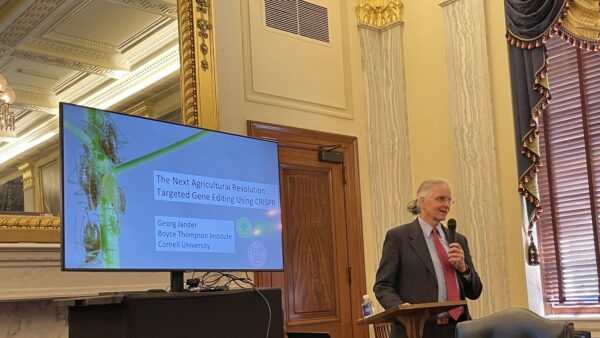Advocates of biotech crops and those who favor traditional farming practices, such as crop diversity, often seem worlds apart, but a new study shows that these two approaches can be compatible.
An international team led by Chinese scientists and Bruce Tabashnik at the University of Arizona’s College of Agriculture and Life Sciences discovered that the diverse patchwork of crops in northern China slowed adaptation to genetically engineered cotton by a wide-ranging insect pest.
Tabashnik used computer simulations to project the consequences of different assumptions about the effects of natural refuges in northern China. The simulations mimic the biology of the cotton bollworm and the planting patterns of the 10 million farmers in northern China from 2010 to 2013, where Bt cotton accounts for 98 percent of all cotton; however, cotton represents only 10 percent of the area planted with crops eaten by the cotton bollworm.
“Natural refuges help but are not a permanent solution,” Tabashnik says. “The paper indicates that if the current trajectory continues, more than half of the cotton bollworm population in northern China will be resistant to Bt cotton in a few years.”
To avoid this, the authors recommend switching to cotton that produces two or more Bt toxins and integrating Bt cotton with other control tactics, such as biological control by predators and parasites.
“The most important lesson is that we don’t need to choose between biotechnology and traditional agriculture,” he says. “Instead, we can use the best practices from both approaches to maximize agricultural productivity and sustainability.”











